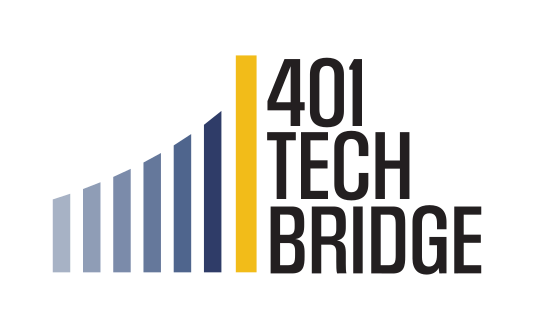
Challenge Details
• TOTAL CASH PRIZES OFFERED: $350,000
• TYPE OF CHALLENGE: Technology demonstration and hardware
• PARTNER AGENCIES | FEDERAL: Office of the Navy, Chief of Information (CHINFO), Commander, U.S. Fleet Forces (USFF), Naval Accelerator (NavalX)
• PARTNER AGENCIES | NON-FEDERAL: Begin Morning Nautical Twilight Consulting (BMNT)
• SUBMISSION START: 10/13/2020 07:00 AM ET
• SUBMISSION END: 01/11/2021 11:59 PM ET
PROBLEM STATEMENT Navy sailors conducting operational tasking for capturing Fleet Visual Information (Fleet VI) need a standalone solution that can quickly and effectively capture broadcast-quality interactions between US Naval vessels and adversarial units violating internationally recognized seafaring protocols to chronologically report these incidents to Combatant Commanders, the Secretary of Defense, and the American public.
BACKGROUND Operational Task Visual Information (OPTASK VI) is a coordinated Navy-wide operational tasking message that defines the Navy requirements and procedures for the collection and dissemination of Fleet VI. Its purpose is to win the battle of the narrative of unsafe and unprofessional interactions by foreign militaries against our maritime vessels. To be first with the truth, video and still photos of these incidents must be recorded to show the whole story. Visually presenting the facts and the context of the encounters brings the Navy one step closer to winning the battle of the narrative. However, the content and context are not enough, timely release of Fleet VI is essential for presenting the facts before a false narrative takes hold. OPTASK VI sets a 40-minute goal for transmitting Fleet VI to the appropriate maritime operations center and/or fleet command at the end of an event. Nevertheless, a broadcast-quality product at one hour is better than a poor product at 40 minutes. Content, context, and time together are ingredients needed to win the battle of the narrative.
To effectively integrate content, context, and timing, Fleet VI teams need to be trained to capture and transmit still photos with full-motion and high definition videos at sea anytime day or night. Some of the training includes capturing video clips that do not exceed 60-seconds in length; these video clips help tell the story of the event. They must maintain consistent point-of-view and field-of-view with both ships in frame. Video clips should also be sent with at least one photo of the event that can further help detail the story. For example, a wide perspective shot that contains visual adversarial ship markers such as flags, vessel hull numbers, and personnel. The ability to capture such video clips and photos minimizes adversary’s ability to produce a false narrative.
Current Solution Fleet VI teams understand the importance of winning the battle of the narrative for unsafe and unprofessional interactions by foreign militaries against our maritime vessels. The current standard operating procedures vary from vessel to vessel; however, effectively integrating content, context, and timing remain a high priority. One example, when a VI event is announced by the commanding officer of the vessel, sailors must hastily assume his/her immediate new role. Switching roles is just one impediment Fleet VI teams face. Other difficulties include maneuvering around several obstacles on the ship with various handheld cameras and/or recording devices to achieve the best footage possible. Once the raw footage is captured, Fleet VI teams must aggregate the footage from many storage devices and engage with multiple shipboard personnel to collect additional data. For example, multiple sensors, bridge-to-bridge communications, ships current location, range, heading and bearing, all of which are potentially important in accurately portraying the story. Lastly, the data must be organized and stored for easy retrieval.
Ideal Solution Even the best trained Fleet VI teams and the most well thought-out standard operating procedures can fall short of effectively and efficiently capturing Fleet VI events. Fleet VI teams need innovative solutions that reliably capture broadcast-quality footage for Combatant Commanders, the Secretary of Defense, and the American public. An ideal solution, as defined by the Navy, would be one that maintains continuous high-definition, wide-angle field-of-view, and point-of-view footage around US Navy vessels in various environmental conditions. Therefore, the Fleet VI Challenge is looking for Submitters as identified in the eligibility, that have Hardware Solutions that are either currently available or will soon (less than 2-years) be available to the private sector and require little to no modification for the Navy’s relevant environment. A Hardware Solution as defined by the Navy as suitable for Fleet VI is as follows: A reliable, scalable, and user-friendly architecture that has multiple Sensors that interface together at a central video management system. This interface may be wireless, hardwired, or a combination of the two; however, it MUST maintain reliable connectivity to a central video management system for maintaining a constant state of continuous recording of VI events. Sensors, as defined by the Navy, must capture, and record high definition quality video and photos of sea interactions between vessels while maintaining a wide field-of-view and a reference point-of-view given various environmental conditions. These clear high definition videos and photos must be managed by a central video management system that may or may not have software/firmware embedded; however, this management system must be reliable, scalable, ruggedized, user-friendly, and capable of organizing captured footage. It must also contain storage capacity either internally or externally that allows sailors the capability to access stored footage at a future date.
For complete challenge information, click here.
